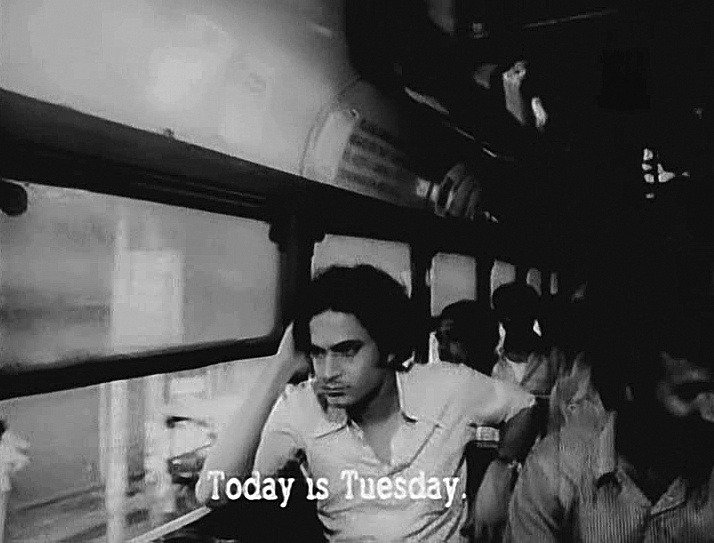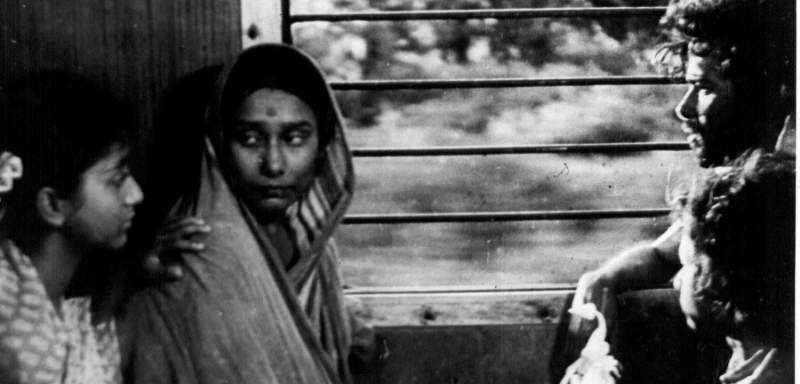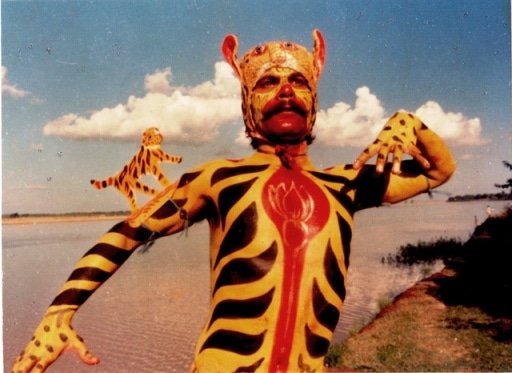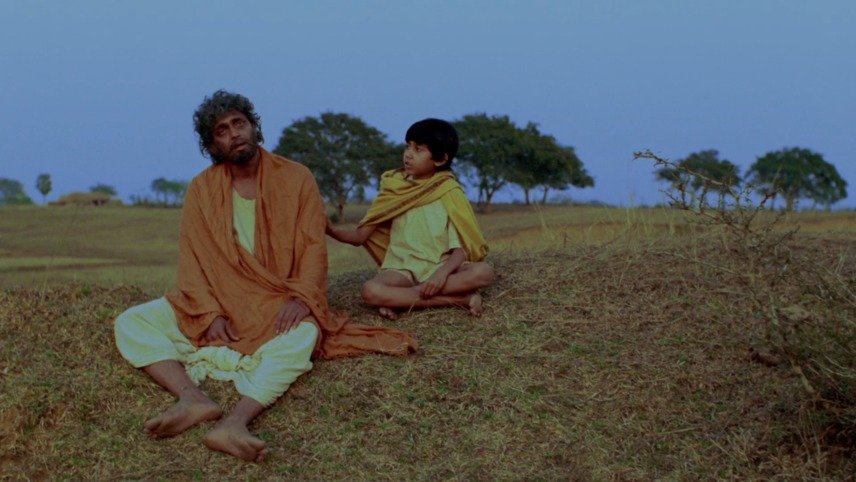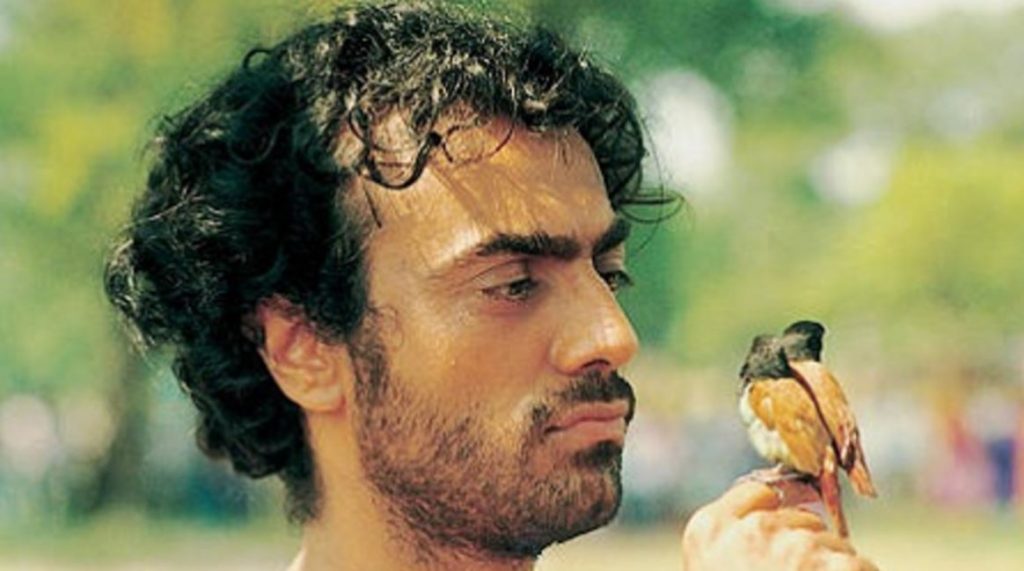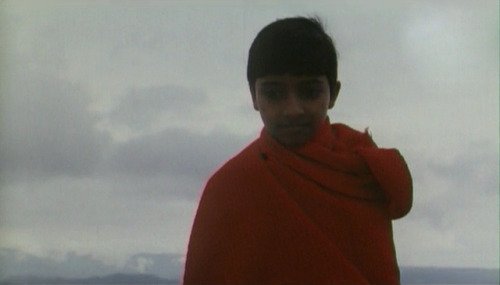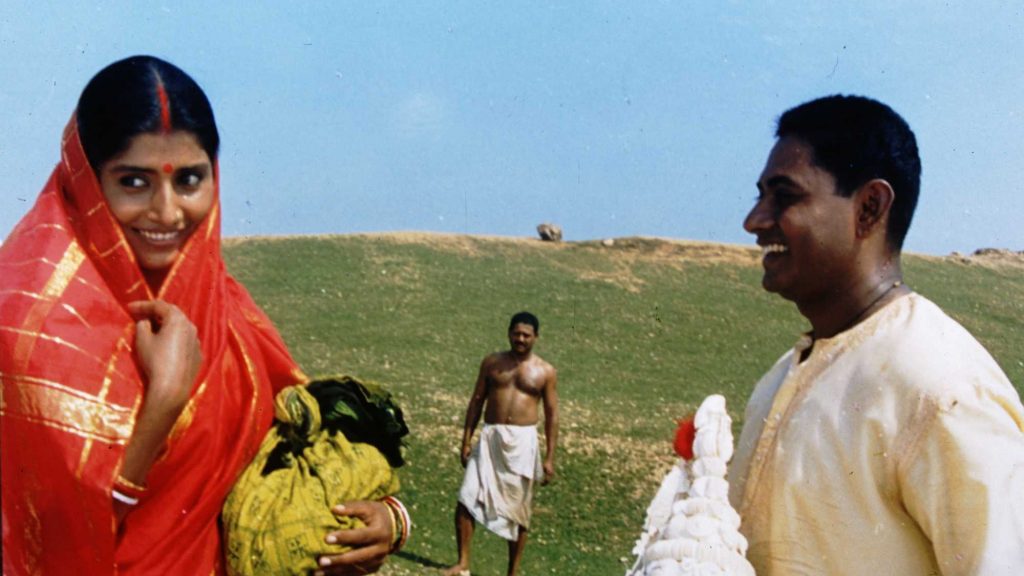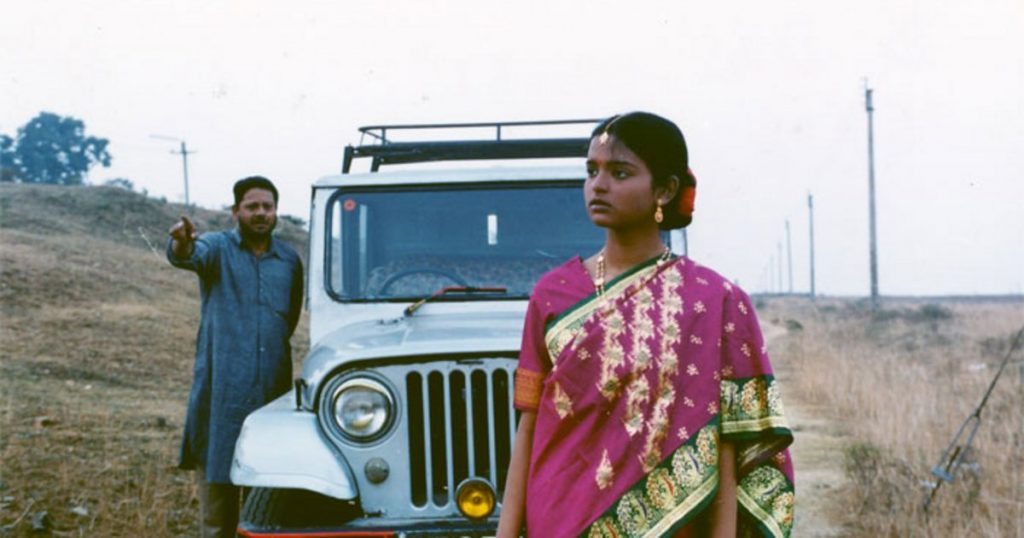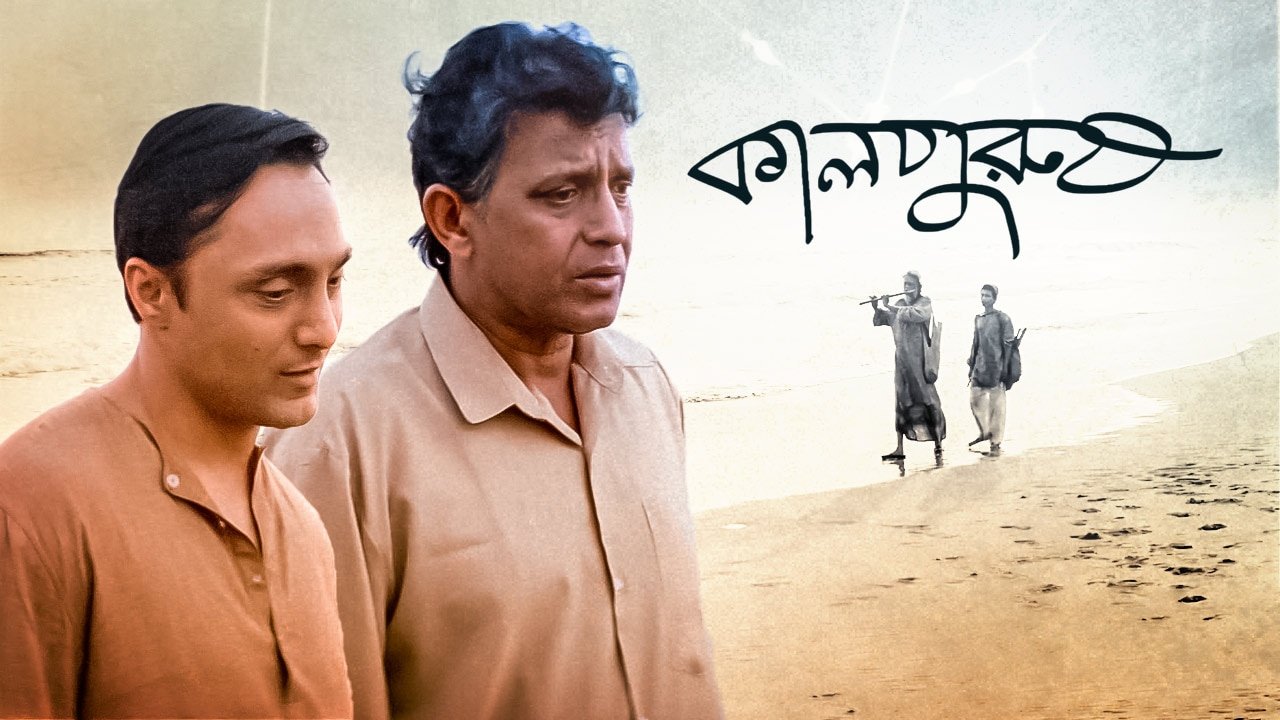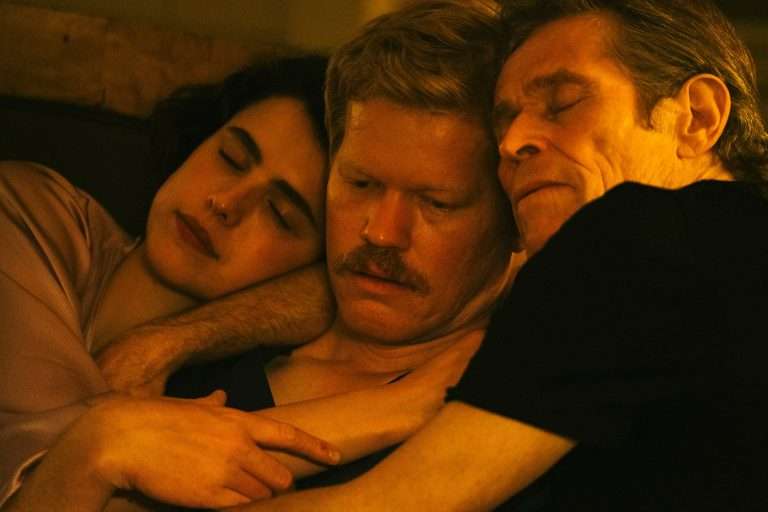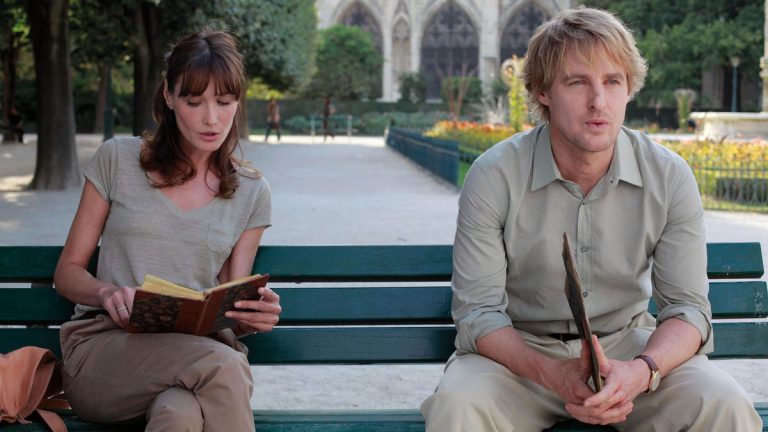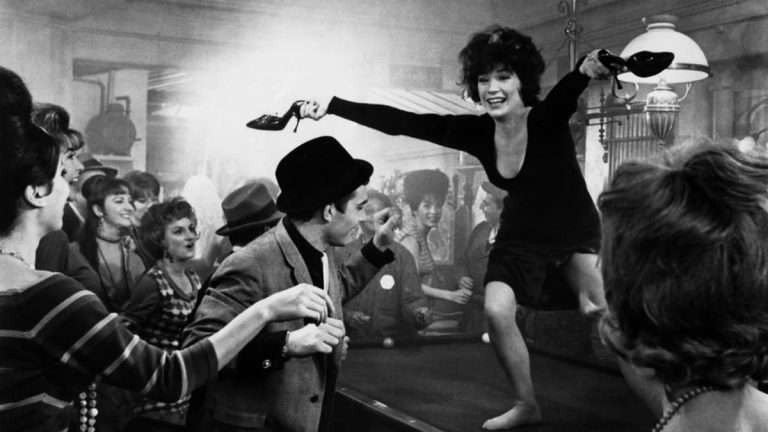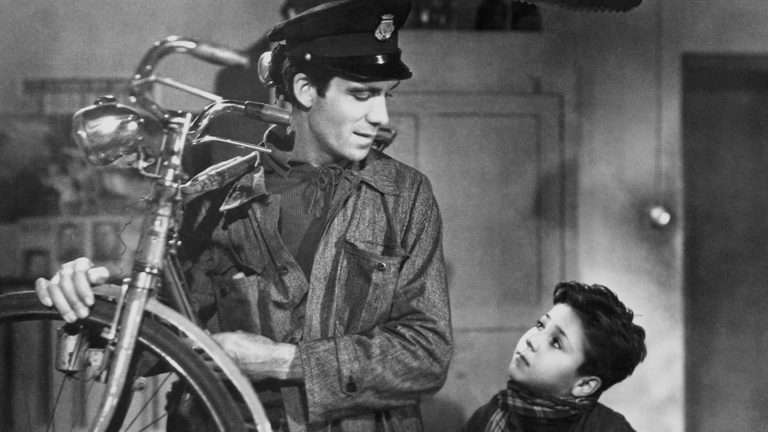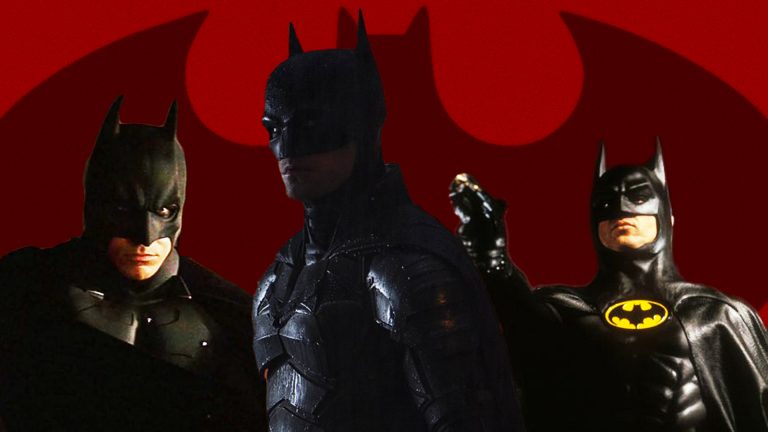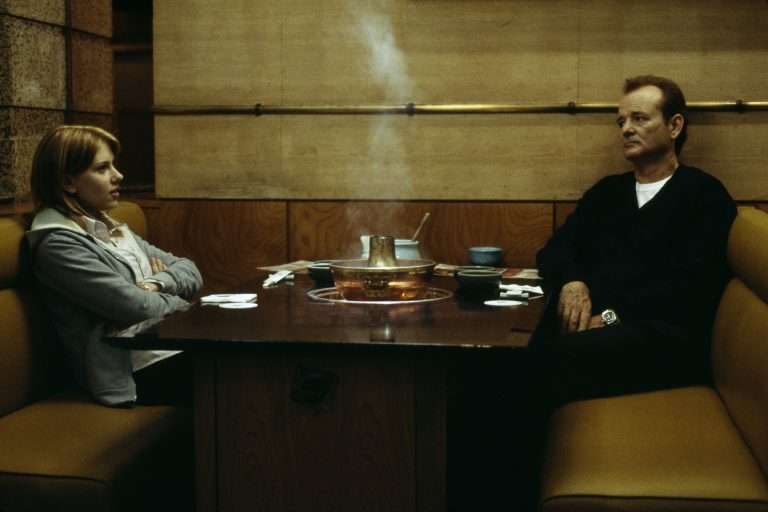Multiple National and International award-winning filmmaker Buddhadeb Dasgupta has established himself as one of India’s finest offbeat filmmakers whose cinematic language bestowed Indian cinema with some of the most exciting and artistic creations. One of the key devouts of the Indian parallel cinema movement, Dasgupta gave up his job as a lecturer in economics to pursue a full-time career in filmmaking. There is a lyrical realism in his treatment, and through his narrative runs a stripe of political anguish and disenchantment. The narrative explores the struggles of individuals against forces that are beyond their control, and as they come to terms with the practicality of their deed, the bitter truth of existence prepares them for another journey.
The relationship between reality and imagination, the reflections of dream visions in our actions, as art is an imitation of nature. This and much more are explored within the cinematic world created by Dasgupta. The magical and perverse relationship that the filmmaker develops with the subject of his cinematographic investigation provides the viewer with the awareness inseparably linked to the moral urgency that gives a voice to society’s invisible and voiceless.
Here’s a list of the 10 most essential Buddhadeb Dasgupta Movies for every cinephile:
1. Dooratwa (Distance, 1978)
Buddhadeb Dasgupta’s debut feature film, based on a short story by Shirshendu Mukhopadhyay, portrays the life of a young man, Mandar, who is a professor of Political Science by profession and liberal by nature. He marries a young woman, Anjali, but the moment he learns that she is pregnant with someone else’s child, he abandons her. As the narrative progresses, the realization dawns upon him that his political ideologies and convictions are not as spirited as he had thought because he refuses to provide refuge to a Naxalite in danger.
To overcome his despondency, he wallows in a relationship with Nandini, which doesn’t turn out to be fruitful. As the film comes to an end, Mandar forms a renewed bond with the estranged Anjali, and the couple embarks upon a sagacious journey. The film has the excellence of a low-budget inventiveness that beautifully captures the psychological drama about a broken marriage and reunion with a social commentary on the actuality of events happening during the ’70s in the city of joy. The film won the Critics Award at the Locarno Film Festival and the Best Bengali Feature Film Award at the National Film Awards, in the year 1979.
2. Neem Annapurna (Bitter Morsel, 1979)
Dasgupta’s Sophomore is a dark tale of a rural family who shifts to the city of joy to ward off the miseries of their life and hopes for a better future. But as one event unfolds after their bid for survival is put to the test. The protagonist, Braja, has been laid off, and he tirelessly looks for work but finds that one door closes and another doesn’t open so easily.
The eldest daughter is on the verge of entering the business of flesh trading for food. The youngest daughter steals birdseed from a caged parrot, the mother discovers that a sack of rice hidden by a diseased beggar, who they have rented a small corner in their apartment, she cooks a meal for the family. But she couldn’t consume the food, as she was plagued by guilt. She starts to puke, a shot that is similar in composition at the beginning of the film. The narrative provides a circularity of the unending problems of the family.
Similar to Buddhadeb Dasgupta Movies – Virumandi [2004]: Kamal Hassan’s vehement tale of foolhardy men
Dasgupta has captured the dingy and cramped spaces, which at times evoke disgust, and viewers could empathize with the characters’ plight. There is verisimilitude in the treatment of the subject. Based on a short story by Kamal Kumar Majumdar, the film doesn’t cohere to any plot points and is extremely atmospheric and realistic. The film won the National Film Award for Best Cinematography in Black and White and a Special Jury Award at the Venice International Film Festival.
3. Grihajuddha (The Civil War, 1982)
His third film, after a gap of three years, is a valiant political thriller that touches upon the interlinking of factory owners and anti-social elements to eliminate individuals whose presence creates a threat to running their business successfully using ethical choices.
The film follows a linear narrative where an unscrupulous steel factory owner gets his labor officer killed because the latter is sympathetic toward the newly formed worker’s union. And then, anti-social elements are hired by the same owner to murder the trade union worker Prabir. An undaunted reporter journalist, Sandipan, investigates the matter; he eventually also gets killed, and the case is never solved.
Dasgupta, with his prowess in screenwriting, diverts our focus to the younger sister of Prabir, Nirupama, as she is in a state of quandary between accepting a well-paid offer from the company, whose owners have killed her brother and abject poverty encircling her family. Even Prabin’s close friend and comrade Bijon discovers that the rift between his successful position as a salesman and a politically pledged Nirupama is too spacious for a romantic alliance. Such fierce attention to the economic and emotional weight of moral choice forms the spine of the storyline.
Based on a story by Dibyendu Palit, the offbeat theme of the film underlines the betrayal by the leftist members of the Communist Revolution, who got swayed between the doubtfulness and motivation of their political ideals. With his austere cinematic style, Dasgupta strokes the film forward through the route of betrayal, intricacies of relationships, intellectual duress & moral disparities. The film went on to win the FIPRESCI Award at Venice International Film Festival in 1982.
4. Bagh Bahadur (The Tiger Man, 1989)
Based on a short story by Prafulla Roy, the film depicts the plight of Ghunuram, who takes time off from his job every year to prepare for and appear in a folk dance in his village, dressed up as a tiger. But a circus troupe with a newly captured leopard has come into his village, Nonpura, and the villagers are showing active interest, too.
Related to Buddhadeb Dasgupta: Tope (2017): A Lost Master
Ghunuram, who is hoping to get married to Radha, the daughter of his fellow performer, is appalled to discover that even his sweetheart is displaying attraction towards a circus performer. Thus, a confrontation initiates between traditional rural folk art and urban medium of entertainment. The conflict is symbolized by Ghurunam as he prepares himself for the most drastic performance. Within the framework of a minimalistic approach, the straightforward and graceful narrative explores the paradigm shift of traditional art forms in the name of development.
The ending of the film is piercing. Where the old drummer standing at the top of a hill, playing his drum, signifying that even if the traditional village Tiger Dancer is defeated, he refuses to be vanquished, even if no one is listening to his beats. So far, Dasgupta has won the Swarna Kamal for Best Feature Film Award five times, and it began with Bagh Bahadur.
5. Tahader Katha (Their Story, 1992)
Shibnath Mukherjee, who was sentenced to eleven years in prison for assaulting a British officer, is now released. While he was serving his sentence, the Partition of India happened, and his family became a refuge in the newly formed nation. Shibnath, who was an impressively powerful individual as a valourous freedom fighter who stood against the tough British ruler, has now been reduced to tenous versions of his former self. He has also spent a good length of his imprisonment in the prison asylum. His wife, Hemangini, prods him to cooperate with his former comrade and friend, Bipin, in the electoral campaign.
Bipin has schemed a plan to capitalize on Shibnath’s legendary reputation for patriotism and, in return, would offer the job of a schoolmaster to the now disillusioned freedom fighter. But Shibnath is not willing to help his crafty friend because he cannot synchronize his mind with the ongoing activities of the current nation. The film thus highlights the traumas of individuals who felt displaced under their newly formed homeland and narrates a complex human story, which exists not at odds with ideology but infiltrating it.
Related to Buddhadeb Dasgupta: The 10 Best Shyam Benegal Films
Buddhadeb Dasgupta has adapted yet another short story by Kamal Kumar Majumdar into a forbearing socio-political tale of tragedy using metaphors. His ideas and his protagonist exist not to contradict each other but to question the human cost of revolution and its inevitable transience. For his impeccable performance and efficaciously portrayal of the tormented freedom fighter of yesteryears, Mithun Chakraborty won Best Actor for the second time at the 40th National Film Awards in 1993, and Buddhadeb Dasgupta won another National Award for the Best Feature Film in Bengali.
6. Charachar (Shelter of the Wings, 1993)
Shots of sea and forest birds flying across the length of the sky cry, calls from the avians echoing within the landscape, the panoramic visuals of the seascapes add up to tell an ostensively emblematic tale about a poor bird catcher, Lakhinder, who is inept as an individual in his area of work. He catches forest birds and sells them to a bird dealer, but at the same time, he develops a self-indulgent tenderness towards the captured creatures and takes a perverse delight in secretly releasing them, a trait that will ultimately lead him to doom.
The two women present within the storyline, Sari, his wife, and Gouri, his partner’s daughter, are presented with contrasting attitudes. Sari is frustrated and angry with his husband and leaves him for another man, whereas Gouri is sympathetic towards Lakhinder’s unusual conduct.
The treatment of the film is extremely poetic and depicts a sensitive and moral representation of the prolonged unfulfilled desire for human liberation and his subsequent estrangement from Nature. The film was adjudged as the Best Feature Film, Buddhadeb Dasgupta’s second Swarna Kamal, at the 41st National Film Awards. The film was also nominated for the Golden Bear Award at the 44th Berlin International Film Festival in 1994.
7. Lal Darja (The Red Door, 1997)
With his 9th feature film, Buddhadeb Dasgupta enters into the terrain where the texture of dreams and memory eschews conventional narrative and plot and instead seeks to illuminate the essence of the unconsciousness through a patient, enigmatic, and reflective cinema that borders on poetic divinity. The rest of his filmography will strictly adhere to this personal approach, and with his subsequent films, the maturity will reach the pinnacle of perfection.
At its’ core, the film narrates the tale of a dentist, Nabin Datta, who is in his late 40s, living in Calcutta, and suffers from the misapprehension that his hands and feet are turning into metal. His personal life with his wife and son is troublesome, and he is beguiled by the virility of his driver, Dinu, who is in a healthy relationship with three women. He also has a patient who is a criminal and with whom he unsuccessfully plans the murder of his wife.
Amongst all this chaos, the dispirited physician finds solace in the memories and dreams of his bygone childhood days, and the ‘red door’ symbolizes his mental and imaginary liberation from the vagaries of life. The film is filled with symbols and metaphors to express the turmoils in the protagonist’s psyche and probe into the intricacies of human relationships in his concurrent metropolitan existence. The film is like a dream-memory unfolding within Nabin’s personal history and functions as a single, unified memory image within a history fragmented in time. Dasgupta won the Swarna Kamal for Best Film at the 44th Indian National Film Awards.
8. Uttara (The Wrestlers, 2000)
Dasgupta’s earlier films had traveled to various international film festivals across the world, but when Uttara won the Special Director’s Award at the 57th Venice International Film Festival in 2000, his fame as a filmmaker catapulted to a new zenith. The film is based on a short story by Samaresh Basu and depicts the life of two ordinary railway employees, Balram and Nemai, who wrestle on their off-time, and the physical activity serves as a medium of bonding between the two individuals.
Balram marries a beautiful woman, Uttara, with whom Nemai falls in love and a breach develops between both the friends. The film is also interspersed with other key characters such as a Christian Pastor, a bunch of dwarfs, three individuals with malicious intentions, a group of dancers and four elderly men, and the young Rakhal converted to Christianity.
Beautiful and sad, and punctuated with images that linger in the mind, the film uses symbols and metaphors to explore the contrarian dynamics between good and evil, religion and fanaticism, aspiration, and the illusion of a better world. With an astonishingly affecting cinematic composition and dense treatment of the subject, the film is devoid of the difficulties that slow-moving minimalist narratives tend to require. In the words of the filmmaker, ‘This is a film about my time, my country.
It focuses on our intolerance, an eternal tension that exists between beauty and ugliness, and on a dream that will not die. The Wrestlers does not so much portray a story of brutality as it tells a tale of innocence, decency, and simplicity which several forces combine to fracture and destroy’. Dasgupta won his first National Film Award for Best Direction for the film.
9. Mondo Meyer Upakhyan (A Tale of a Naughty Girl, 2002)
Set in 1969, the film is based on a short story by Bengali writer Prafulla Roy, and the central idea is developed by Buddhadeb Dasgupta. The storyline of the film follows a young girl, Lati, the daughter of a sex worker, Rajani, who wants to complete her studies, but her mother wants to sell her to an affluent old man who is a cinema-hall owner and prefers watching erotic content. To pursue her dreams, she escapes to the city of Calcutta.
There are other storylines in the film where an old couple had to depend on the mercy of a driver for their well-being and three young sex workers on their reverie of living an unshackled life. And then there is a lumbering cat and a not-so-unwise donkey within the narrative. Through his spiritual and allegorical approach, the director lapses into such a poetic milieu that one cannot help but be transfixed and shaken by the bewildering beauty of his films. The images in the film give content it’s significance.
The treatment of the story reflects the filmmaker’s preoccupation with form and aesthetic renewal through a series of vital connections: with nature, with the past, with originating cultures, including the parallels drawn with man’s landing on the moon. The film isn’t just Buddhadeb Dasgupta’s cinematic excellence captured on film stock, it’s life at its purest; a certified masterpiece through and through. The film won the fourth Swarna Kamal at the 50th National Film Awards for the filmmaker.
Films of Buddhadeb Gupta – John H Wood available on Amazon
10. Kaalpurush (Memories in the Mist, 2008)
Buddhadeb Dasgupta’s 14th feature film can be christened as one of his most complex narrative structures not only due to its non-linear fragmentation of events but also due to the idiosyncratic lyricism that works as a tool to chronicle the fate of different characters and allows it to flow on different cinematic space.
The protagonist of the film, Sumanta, belongs to a middle-class family. He has a troubled relationship with his wife, Supriya, who dreams of absconding from her suffocating domestic subsistence. Sumanta is also having difficulties in his professional life. However, he is a principled and upstanding individual who holds on tightly to the simple joys of life and memories of his childhood. The spirit of his deceased father straggles him as he fails to convey his feelings to his distant wife and son.
Masked troupes of village dancers, an old flute-seller, Idrish, and his son, Abdul, incorporate themself as an allegorical presence within the film. The director adopts an organic style of telling a story and uses images to suffuse with movement, time, and locations.
Throughout the 120-minute duration, the poetic rendition in the form of images slowly materializes, makes its presence felt, and then vanishes from the screen, but not from the mind’s eye, where it leaves a permanent impression—an impression that is renewed and modified, and transformed with a deep-seated viewing experience. With this, Dasgupta triumphed yet again with his fifth and final Swarna Kamal Award at the 53rd National Film Awards.

